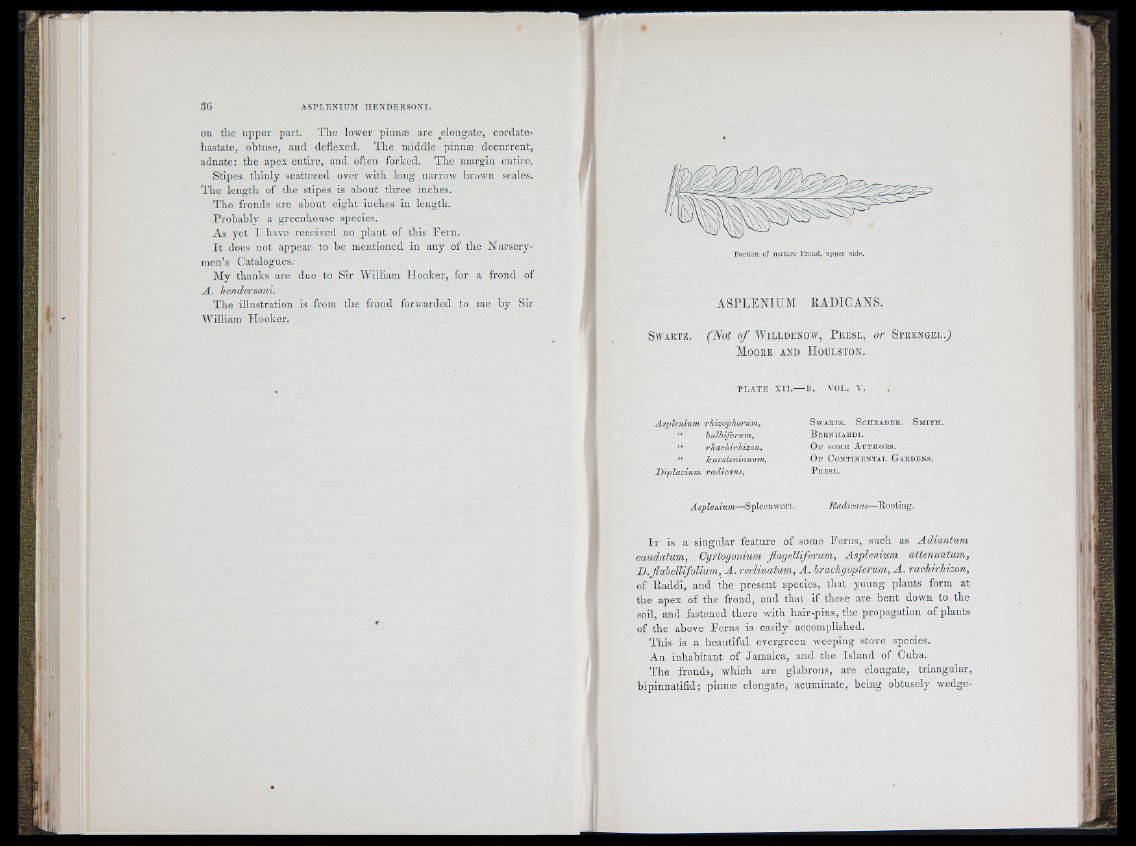
on the upper part. The lower pinnæ are ^elongate, cordate-
hastate, obtuse, and deflexcd. The middle pinnæ decurrent,
adnate: the apex entire, and often forked. The margin entire.
Stipes thinly scattered over with long narrow brown scales.
The length of the stipes is about three inches.
The fronds are about eight inches in length.
Probably a greenhouse species.
As yet I have received no plant of this Fern.
It does not appear to be mentioned in any of the Nurserymen’s
Catalogues.
My thanks are due to Sir AWlliam Hooker, for a frond of
A . hendersoni.
.The illustration is from the frond forwarded to me by Sir
AVilllam Hooker.
ASPLENIUM RADICANS.
Swartz. (Not o f AVilldenow, P resl, or Sprengel.J
M oore and H oulston.
p l a t e x i i .— n . VOL. v .
Asp lén ium rhizophorum,
“ hulbiferum,
“ rliachirhizon,
“ harstenianum,
D ip la z ium radicans,
Swaetz. Sch iu d e r . Sm ith .
B een haedi.
Of some Authors.
Of Continental Gardens.
P eesl.
Asp lén ium—Spleenwort. Ttadicans—Pootiug.
I t is a singular feature of some Ferns, such as Adiantum
caudatum, Cyrtogonium flagelliferum. Asplénium attenuatum,
B . flabellifolium, A . reclinatum, A . brachyopterum, A . rachirhizon,
of Eaddi, and the present species, that young plants form at
the apex of the frond, and that if these are bent down to the
soil, and fastened there with hair-pins, the propagation of plants
of the above Ferns is easily accomplished.
This is a beautiful evergreen weeping stove species.
An inhabitant of Jamaica, and the Island of Cuba.
The fronds, which are glabrous, are elongate, triangular,
bipinnatifid; pinnæ elongate, acuminate, being obtusely wedge